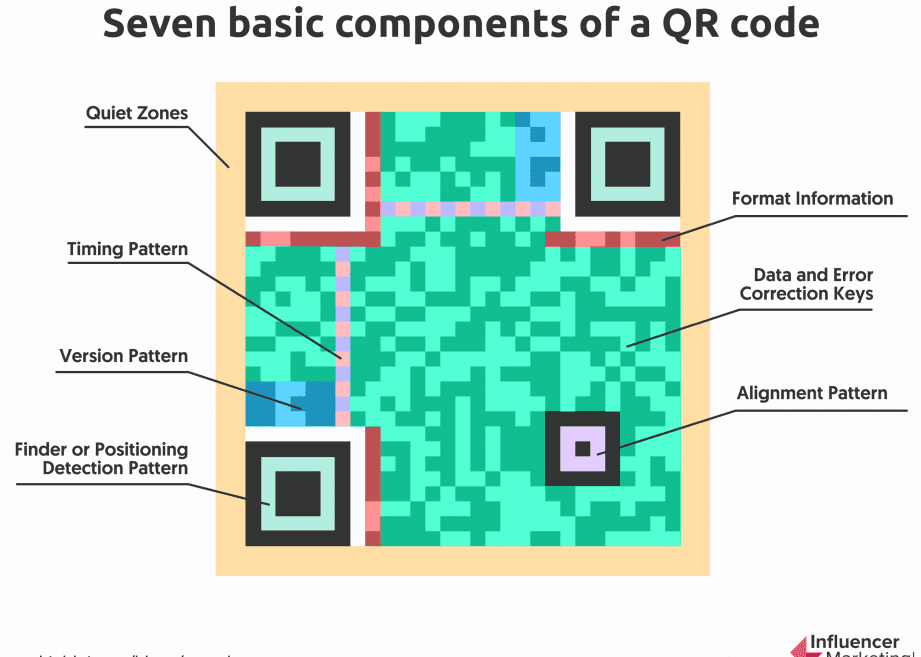What Are QR Codes And How Do They Work?
QR codes are two-dimensional barcodes that store information, and they are becoming more prevalent in our daily lives. Here’s how they work:
QR codes are no longer just for marketing; they have evolved to be used for contactless payments, ticketing, and even access control. With technology rapidly advancing, it’s exciting to see where QR codes will be used next.
Understanding QR codes: A brief introduction
QR codes, also known as Quick Response codes, have become ubiquitous in recent years. These square-shaped codes may look like just a random collection of black and white pixels, but they hold a significant amount of data. QR codes compress data and allow it to be easily scanned and interpreted by smartphones or other devices equipped with a camera. QR codes are used to share information quickly, efficiently, and accurately, making them an increasingly popular tool in various industries.
The anatomy of a QR code: Explained
QR codes are made up of three main components: the finder pattern, the alignment pattern, and the timing pattern. The finder pattern, located in the corners of the code, helps the scanner identify the orientation of the code. The alignment pattern, located near the middle of the code, helps the scanner determine the size of the code. The timing pattern, a series of alternating black and white modules, helps the scanner synchronize with the code’s image.
The QR code also contains the actual data that needs to be transferred. The data is encoded using a series of black and white squares arranged in a specific pattern. QR codes can hold various types of data, including URLs, contact information, or even entire documents.
Encoding information: How QR codes work
QR codes use a type of encoding known as Reed-Solomon error correction. This means that even if a small part of the code is damaged or obstructed during scanning, the scanner can still interpret the data accurately.
There are different types of QR codes, ranging from basic QR codes that can hold only a few hundred characters, to high-capacity codes that can hold up to several kilobytes of data. The amount of information that a QR code can hold depends on the size of the code and the type of encoding used.
The role of scanners and smartphones in QR codes
Scanning a QR code requires a camera-equipped device, such as a smartphone or a tablet, and a special app that can interpret the code. Once the app is launched, it simply needs to be pointed at the QR code, and the scanner will automatically detect it.
The use of QR codes has become increasingly popular because of the widespread use of smartphones. Smartphones allow users to quickly and easily access information contained within a QR code without the need for additional hardware or software.
Advantages and disadvantages of using QR codes
Advantages:
– Quick and efficient: QR codes make it easy and fast to transmit information with just a few seconds of scanning time.
– Versatile: QR codes can contain a wide variety of information, including URLs, contact information, text messages, and even videos.
– Trackable: QR codes can track the number of times they are scanned, which makes it possible to measure the effectiveness of marketing campaigns.
Disadvantages:
– Limited audience: not all smartphones have the capability to scan QR codes.
– QR codes could be mistaken for spam, leading to user apprehension.
– QR codes are useless if the scanner app cannot recognise the code.
Potential applications of QR codes in different industries
QR codes have numerous applications in various industries, including but not limited to:
Transportation: QR codes can be used to provide transit schedules, ticket information, and real-time updates on public transportation.
Marketing: QR codes can direct consumers to a website, social media channels or can share more information about a specific product.
Healthcare: QR codes can be used to encode health records and patient information.
Fashion and Retail: QR codes can help customers learn more about the products they are browsing, see reviews, or pay for their items.
Best practices for creating effective QR codes
To make a QR code effective and user-friendly, there are several best practices to keep in mind:
– Keep the code simple and make sure it works.
– The code should be large enough to be easily scanned but not too big to become a burden.
– Make sure the code is properly formatted and designed for optimal readability.
– Test the QR code to ensure it has no errors and to check if it leads the user exactly where it was intended to take them.
In conclusion, QR codes continue to grow in popularity as a means of efficient data exchange. With their versatile nature and numerous applications, QR codes are fast becoming a valuable addition to the way we interact with data in our daily lives.





